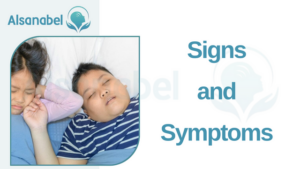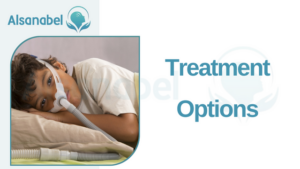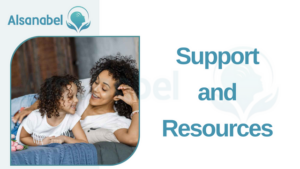Sleep Apnea in Children Signs and Treatment 2023
- Category ADHD
sleep apnea in children
Sleep apnea in children, also known as pediatric obstructive sleep apnea (OSA), is a condition characterized by repetitive pauses in breathing during sleep. These pauses, known as apneas, can occur due to a blockage in the airway. OSA is more commonly related to enlarged tonsils and adenoids in children rather than obesity, which is a common factor in adult sleep apnea.
Causes and risk factors
In children, the main cause of sleep apnea is enlarged tonsils and adenoids. These are the tissues located at the back of the throat and nose that can obstruct the airway during sleep. Other risk factors for pediatric sleep apnea include obesity, family history of the condition, craniofacial abnormalities, and certain medical conditions like Down syndrome.
If left untreated, sleep apnea in children can have serious consequences. It can lead to daytime sleepiness, fatigue, poor concentration, and behavioral problems. Additionally, sleep apnea can affect a child’s growth, cognitive development, and overall quality of life.
Early diagnosis and treatment are crucial in managing pediatric sleep apnea. Treatment options may include lifestyle changes, such as weight loss for overweight children, and the removal of enlarged tonsils and adenoids through surgery. Continuous positive airway pressure (CPAP) therapy may also be recommended, which involves wearing a mask over the nose or mouth to deliver a constant flow of air during sleep.
Signs and Symptoms
One of the most common signs of obstructive sleep apnea in children is loud snoring. However, it’s important to note that not all children who snore have sleep apnea. When accompanied by other symptoms, snoring can be a red flag. Children with sleep apnea may snore frequently and have pauses, snorts, or gasps in their breathing. These interruptions in breathing occur because the airway becomes blocked or partially obstructed during sleep.

Daytime symptoms and behavioral changes
Children with sleep apnea often experience daytime sleepiness due to disrupted sleep. They may have a hard time waking up in the morning and feel tired throughout the day. This can lead to difficulties paying attention, being hyperactive, and experiencing behavioral and learning problems. Sleep apnea can significantly impact a child’s school performance and overall quality of life.
Other signs to look out for include very restless sleep, sleeping in unusual positions, especially if a child had previously stayed dry at night. Daytime symptoms also include mouth breathing, morning headaches, and enuresis (bed-wetting). Sleepwalking and decline in school performance or decreased growth rate may also be indicators of sleep apnea in children.
It is crucial for parents and caregivers to recognize these signs and seek medical attention if their child exhibits any of them. Pediatric sleep apnea can have long-term effects on a child’s health and development if left untreated.
Early diagnosis and treatment are key in managing pediatric sleep apnea. A healthcare professional specializing in sleep disorders can evaluate and diagnose the condition. Treatment options may include lifestyle changes and weight management, surgical removal of enlarged tonsils and adenoids, or the use of continuous positive airway pressure (CPAP) therapy. CPAP therapy involves wearing a mask over the nose or mouth during sleep to deliver a constant flow of air, keeping the airway open.
Diagnosis
To diagnose pediatric sleep apnea, a healthcare professional follows a systematic approach to gather information about the child’s symptoms and medical history. One of the key diagnostic methods is a sleep study, also known as a polysomnogram. During a sleep study, the child spends a night in a sleep lab, where various parameters are monitored and recorded. This includes measuring brain activity, eye movements, oxygen levels, heart rate, and respiratory effort. The data obtained from the sleep study helps in determining if the child has sleep apnea and the severity of the condition.
Other diagnostic methods may include a home sleep apnea test. This test is conducted in the comfort of the child’s own home and involves wearing a portable monitoring device that records the same parameters as a sleep study. Although it may not provide as comprehensive results as a sleep study, it can be a more convenient option for some children.
Clinical evaluation and medical history
In addition to the sleep study, a healthcare professional will conduct a clinical evaluation and review the child’s medical history. During this evaluation, the healthcare professional will examine the child’s head, neck, nose, mouth, and tongue for any physical abnormalities that could contribute to sleep apnea. They will also inquire about the child’s symptoms, such as loud snoring, irregular breathing patterns, daytime sleepiness, and behavioral changes. It is important for parents or caregivers to provide detailed and accurate information about their child’s symptoms and any observed patterns.
Risk factors such as obesity, a family history of sleep apnea, and certain medical conditions may also be discussed during the evaluation. This comprehensive approach helps healthcare professionals make an accurate diagnosis and develop an appropriate treatment plan tailored to the child’s specific needs.
Treatment Options
Once pediatric sleep apnea is diagnosed, it is important to initiate appropriate treatment to improve the child’s sleep quality and overall well-being. The treatment approach may vary depending on the severity of the condition, the child’s age, and any underlying medical conditions. Here are some commonly used treatment options for pediatric sleep apnea:

Positive Airway Pressure Therapy
Positive airway pressure therapy is a commonly recommended treatment for pediatric sleep apnea. It involves wearing a mask or nasal prongs connected to a machine that delivers pressurized air. This air pressure helps keep the airway open during sleep and prevents interruptions in breathing. PAP therapy can be used in children of different age groups, including infants, and it is considered a safe and effective treatment option.
Surgery and Other Interventions
In some cases, surgical interventions may be necessary to correct anatomical abnormalities or remove obstructions in the airway. Adenotonsillectomy, which involves removing the tonsils and adenoids, is a common surgical procedure for treating sleep apnea in children. Other surgical options may include removal of nasal polyps, correction of jaw alignment, or removal of enlarged tissues in the throat.
Orthodontic interventions, such as wearing braces or oral appliances, may also be recommended to improve craniofacial growth and correct any structural abnormalities that contribute to sleep apnea. Medications may be prescribed in certain cases, such as if there is underlying inflammation or allergies that exacerbate sleep apnea symptoms.
By providing comprehensive treatment that addresses the underlying causes and symptoms of pediatric sleep apnea, healthcare professionals can help children achieve better sleep, improve their cognitive and behavioral functioning, and prevent potential long-term complications associated with untreated sleep apnea.
Lifestyle Changes
When it comes to treating sleep apnea in children, lifestyle changes play a crucial role in managing the condition and improving their overall sleep quality. Along with medical interventions, implementing certain habits can greatly benefit children with sleep apnea. Here are some key lifestyle changes that can make a difference.
Weight management and healthy sleep habits
One of the primary lifestyle changes recommended for children with sleep apnea is maintaining a healthy weight. Obesity is known to be a risk factor for developing sleep apnea, so losing even a moderate amount of weight can significantly improve symptoms. Encouraging a well-balanced diet and regular physical activity can help children achieve and maintain a healthy weight.
In addition to weight management, establishing healthy sleep habits is essential for children with sleep apnea. This includes having a regular sleep schedule, ensuring a comfortable sleep environment, and practicing good sleep hygiene. Creating a relaxing bedtime routine and avoiding stimulating activities close to bedtime can also promote better sleep.
Avoiding triggers and irritants
Identifying and avoiding triggers and irritants that worsen sleep apnea symptoms is another important aspect of lifestyle changes. Allergens, such as dust mites or pet dander, can contribute to nasal congestion and obstruction, making sleep apnea symptoms worse. It is important to keep the child’s sleep environment clean and free of potential allergens.
Additionally, smoking and exposure to secondhand smoke should be strictly avoided as they can aggravate respiratory issues and increase the risk of sleep apnea. It is crucial to create a smoke-free environment for the child’s overall health and well-being.
By implementing these lifestyle changes, parents and caregivers can support their child’s treatment for sleep apnea and potentially reduce the severity of their symptoms. However, it is important to note that lifestyle changes alone may not be sufficient in managing sleep apnea, especially in moderate to severe cases. Consulting with a healthcare professional specialized in pediatric sleep disorders is crucial for appropriate diagnosis and treatment recommendations.
Management of Associated Conditions
In addition to implementing lifestyle changes, it is important to address any underlying medical issues that may be contributing to a child’s sleep apnea. Identifying and treating these conditions can significantly improve the child’s sleep quality and overall well-being.
One common underlying issue seen in children with sleep apnea is adenotonsillar hypertrophy, which refers to the enlargement of the adenoids and tonsils. This can obstruct the airway and lead to sleep-disordered breathing. In such cases, removal of the adenoids and/or tonsils through adenotonsillectomy may be recommended. This surgical intervention can effectively alleviate the obstruction and improve sleep apnea symptoms.
Other medical conditions, such as allergies, asthma, and nasal congestion, can also contribute to sleep apnea. Appropriate management of these conditions, including the use of nasal sprays, antihistamines, and asthma medications, can help reduce nasal congestion and improve breathing during sleep.
Managing complications and comorbidities
Children with sleep apnea may experience various complications and comorbidities that require additional management. These can include behavioral issues, such as attention-deficit/hyperactivity disorder (ADHD) and learning difficulties, as well as cardiovascular problems, including high blood pressure.
Behavioral interventions, such as counseling and cognitive-behavioral therapy, may be beneficial in addressing the psychological and cognitive effects of sleep apnea. Additionally, treatment for ADHD and learning difficulties should be considered if present, as improved sleep quality can positively impact these conditions.
For children with cardiovascular complications, close monitoring and appropriate treatment strategies, such as medication or lifestyle modifications, may be necessary to manage high blood pressure and prevent further health risks.
It is important for healthcare professionals specialized in pediatric sleep disorders to collaboratively manage these associated conditions and complications, working in partnership with parents, caregivers, and other healthcare providers. With comprehensive treatment that addresses both the underlying medical issues and associated comorbidities, children with sleep apnea can experience improved sleep quality and long-term outcomes.
Support and Resources
Parents and caregivers of children with sleep apnea often find solace and guidance from support groups and organizations dedicated to sleep disorders in children. These groups provide a platform for individuals to connect with others who are going through similar experiences, allowing for the sharing of information, advice, and emotional support. They can also provide valuable resources for finding qualified sleep specialists and treatment options.

Some notable organizations and support groups include the American Sleep Apnea Association (ASAA), which offers resources and support for individuals of all ages dealing with sleep apnea, including children. The ASAA website provides comprehensive information on sleep apnea, treatment options, and tips for managing the condition.
Educational resources for parents and caregivers
Understanding sleep apnea in children and how to effectively manage it is crucial for parents and caregivers. Educational resources can provide valuable information and strategies for dealing with the condition.
SleepApnea.org, for example, offers a wealth of educational materials specifically tailored to parents and caregivers of children with sleep apnea. Their resources cover topics such as recognizing the signs of sleep apnea in children, managing sleep apnea-related behavioral issues, and tips for creating a sleep-friendly environment for children.
By connecting with support groups and accessing educational resources, parents and caregivers can gain the knowledge and support necessary to effectively manage their child’s sleep apnea. It is important for them to collaborate with healthcare professionals and stay informed about the latest advancements in treatment options to ensure the best outcomes for their child.
Monitoring and Follow-Up
After diagnosing a child with sleep apnea, it is crucial to develop a comprehensive action plan to address the condition. A key aspect of this plan is regular check-ups and reassessment of symptoms. The American Academy of Pediatrics emphasizes the importance of ongoing monitoring to ensure an evidence-based approach to treatment.
During these check-ups, healthcare providers will evaluate the child’s progress and assess the effectiveness of the chosen treatment method. This may involve conducting additional tests or referring the child to a specialist for further evaluation. It is essential to closely monitor the child’s symptoms and response to therapy to identify any need for adjustments or alternative interventions.
Importance of ongoing care
Sleep apnea in children is a chronic condition that requires ongoing care. Treatment plans may include a combination of interventions, such as allergy treatment, lifestyle changes, and the use of devices like continuous positive airway pressure (CPAP) machines. It is crucial for parents and caregivers to follow the recommended treatment plan and ensure regular follow-up appointments with healthcare providers.
The value of ongoing care is emphasized by the American Academy of Sleep Medicine (AASM) and the American Academy of Pediatrics. Regular follow-up appointments allow healthcare providers to track the child’s progress, assess treatment response, and make necessary adjustments to optimize outcomes.
By staying vigilant and committed to ongoing care, parents and caregivers can ensure that their child’s sleep apnea is effectively managed. Regular check-ups and reassessment of symptoms will help identify any changes or challenges in the child’s condition, allowing for timely intervention and adjustment of the treatment plan. With close monitoring and ongoing care, children with sleep apnea can enjoy improved sleep quality and overall well-being.
Promising research and advancements in treatment
Research in the field of pediatric sleep apnea has led to promising advancements in treatment options. Continuous positive airway pressure (CPAP) machines are commonly used to provide relief and improve sleep quality in children with moderate to severe sleep apnea. However, advancements in surgical techniques, such as adenotonsillectomy, have also shown positive outcomes in certain cases. The use of orthodontic devices and oral appliances is another area of research that holds potential in the management of sleep apnea in children. These advancements provide hope for improved treatment outcomes and better quality of life for affected children.
Importance of early detection and intervention
Early detection and intervention play a crucial role in managing sleep apnea in children. Recognizing the signs and symptoms of sleep apnea, such as loud snoring, restless sleep, and daytime fatigue, is essential for parents and caregivers. Seeking medical evaluation and diagnosis at the earliest signs is important to prevent further complications and long-term consequences.
Once diagnosed, implementing a comprehensive treatment plan is essential. This may include lifestyle changes, such as weight management and improving sleep hygiene, as well as medical interventions like CPAP therapy or surgery. Prompt intervention not only helps alleviate the immediate symptoms but also provides the opportunity for long-term improvement in the child’s overall health and quality of life.
In conclusion, early detection and intervention in pediatric sleep apnea are crucial for a child’s development and well-being. Ongoing monitoring and follow-up are necessary to ensure the effectiveness of the treatment plan and make any necessary adjustments. With advancements in treatment options and a proactive approach to management, children with sleep apnea can have brighter futures with improved sleep quality and overall health.









